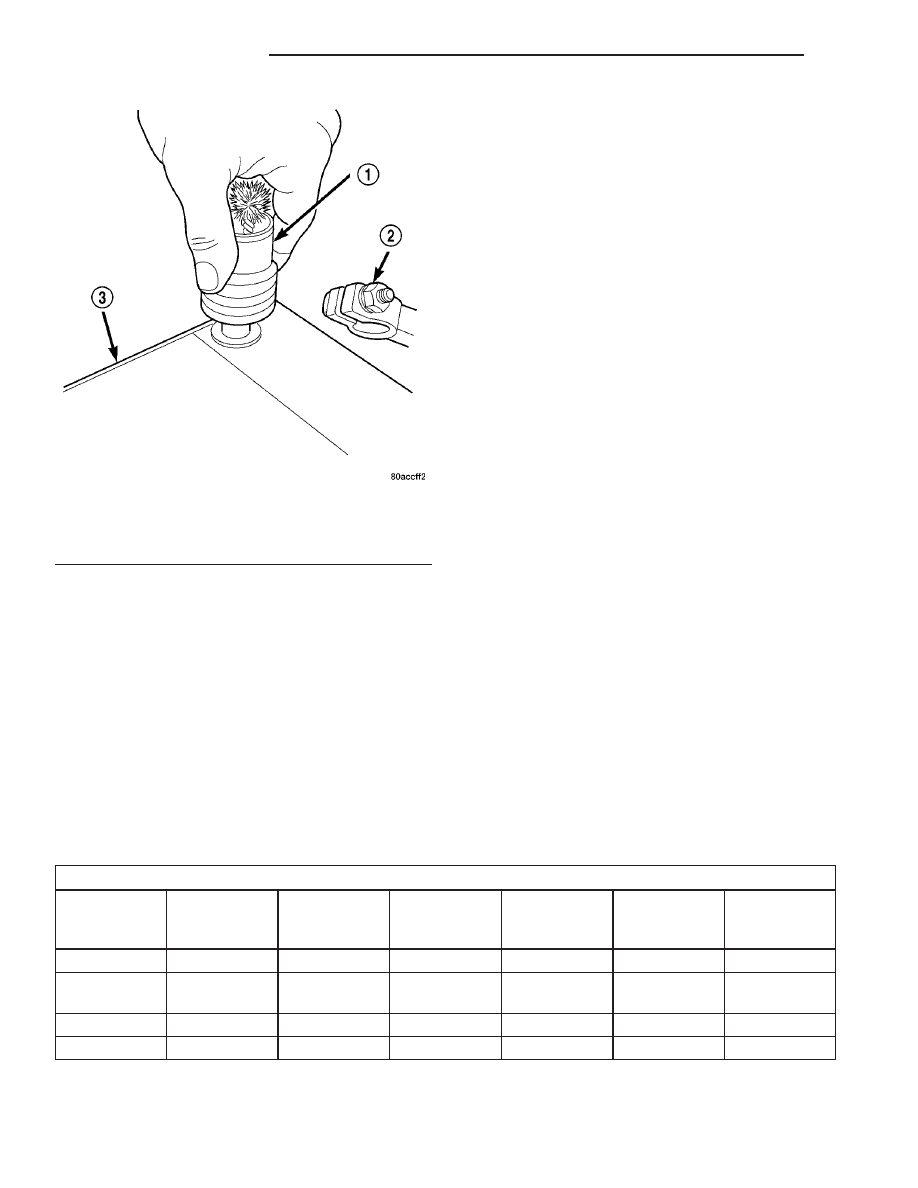Chrysler PT Cruiser. Manual - part 477

Replace any battery thermal guard that has been
damaged.
(5) Inspect the battery built-in test indicator sight
glass (if equipped) for an indication of the battery
condition. If the battery is discharged, charge as
required. Refer to Standard Procedures for detailed
instructions.
SPECIFICATIONS
SPECIFICATIONS
The battery Group Size number, the Cold Cranking
Amperage (CCA) rating, and the Reserve Capacity
(RC) rating or Ampere-Hours (AH) rating can be
found on the original equipment battery label. Be
certain that a replacement battery has the correct
Group Size number, as well as CCA, and RC or AH
ratings that equal or exceed the original equipment
specification for the vehicle being serviced. Battery
sizes and ratings are discussed in more detail below.
NOTE: Vehicles equipped with a diesel engine uti-
lize a unique battery. The specifications for this bat-
tery may differ from the standards shown here.
Refer to the battery manufacturer for detailed spec-
ifications.
• Group Size - The outside dimensions and ter-
minal placement of the battery conform to standards
established by the Battery Council International
(BCI). Each battery is assigned a BCI Group Size
number to help identify a correctly-sized replace-
ment.
• Cold Cranking Amperage - The Cold Crank-
ing Amperage (CCA) rating specifies how much cur-
rent (in amperes) the battery can deliver for thirty
seconds at -18° C (0° F). Terminal voltage must not
fall below 7.2 volts during or after the thirty second
discharge period. The CCA required is generally
higher as engine displacement increases, depending
also upon the starter current draw requirements.
• Reserve Capacity - The Reserve Capacity (RC)
rating specifies the time (in minutes) it takes for bat-
tery terminal voltage to fall below 10.5 volts, at a
discharge rate of 25 amperes. RC is determined with
the battery fully-charged at 26.7° C (80° F). This rat-
ing estimates how long the battery might last after a
charging system failure, under minimum electrical
load.
• Ampere-Hours - The Ampere-Hours (AH) rat-
ing specifies the current (in amperes) that a battery
can deliver steadily for twenty hours, with the volt-
age in the battery not falling below 10.5 volts. This
rating is also sometimes identified as the twenty-
hour discharge rating.
BATTERY CLASSIFICATIONS & RATINGS
Vehicle
Part Number
BCI Group
Size
Classification
Cold
Cranking
Amperage
Reserve
Capacity
Ampere -
Hours
Load Test
Amperage
PT 2.0/2.4L
04671579AB
26R
510
92 Minutes
50
255
PG 2.2L
Diesel
04868999AA
34
700
95 Minutes
48
350
PG 2.0L
05033315AA
45
510
80 Minutes
55
255
PG 1.6L
05033211AA
44
510
80 Minutes
50
255
Fig. 3 Clean Battery Terminal Post - Typical
1 - TERMINAL BRUSH
2 - BATTERY CABLE
3 - BATTERY
8F - 6
BATTERY SYSTEM
PT
BATTERY SYSTEM (Continued)